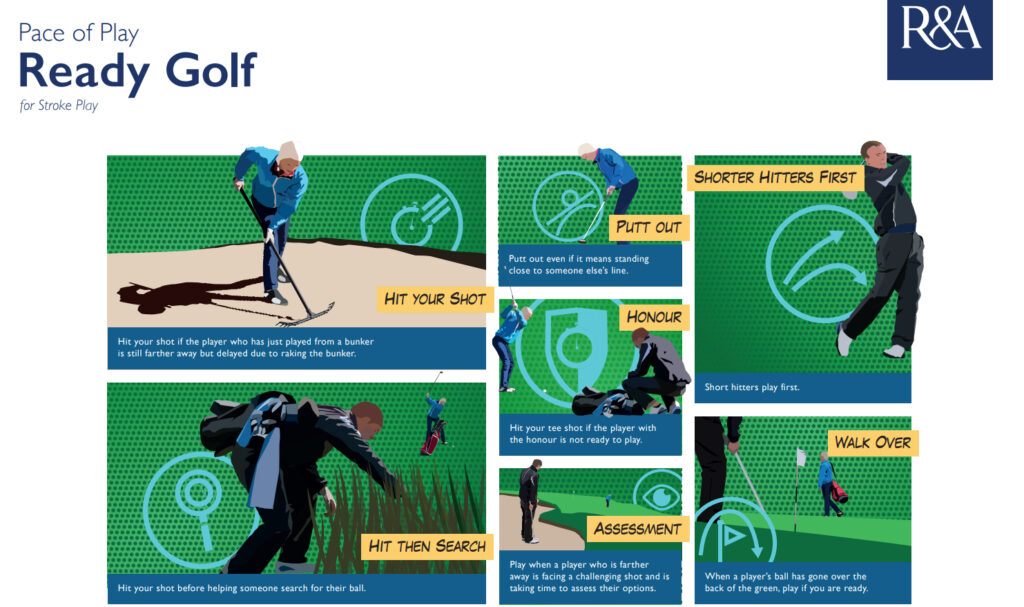
15 May A quick game’s a good game
There’s an old saying about sport – “a quick game’s a good game”, and although professional golfers don’t seem to always buy into this, as Club golfers it’s probably something that most of us aspire to!
The R&A recognised this a few years ago and established “Ready Golf” principles for adoption by Clubs. At last month’s Board meeting I proposed that MRGC formally adopt the R&A’s principle of Ready Golf, and as a Board we unanimously adopted the motion.
The Seven Principles that the R&A released are outlined in the graphic below, and they are mostly just common-sense ideas for how to speed up play. They may however be different to what many of us currently do on the Course. Speaking personally, I’ve definitely picked up a few tips to improve my own pace of play by re-familiarising myself with these pointers.

The Seven Principles are (in order from Tee to Green):
- ‘Shorter Hitters Play First’ – When on the tee, the shorter hitters in your group should always play first. They are the least likely to be able to reach the group ahead in the fairway, so should hit as soon as it is safe to do so. Longer hitters should wait and hit last once it is safe to do so
- ‘No More Honours’ – If the player with the ‘Honour’ is either not ready to hit, or is a longer hitter (per above), then the player who is ready should hit their tee shot as soon as it is safe to do so.
- ‘Hit Then Search’ – Generally speaking you should always hit your own shot before helping someone else search. There will occasionally be exceptions to this, eg a player hits into a wetland very close to the tee, but these should be the rare exception. If the player with the lost ball is driving a shared cart then it would be good etiquette to drop off the other player at their ball before proceeding to the search area for their own ball. (A reminder also that in the MiScore app, there is a 3 minute timer built into the scoring page. If you tap the timer box in the top left hand corner of the screen it will start a 3 minute countdown).
- ‘Assessment / Difficult Shots’ – If a player further from the hole than you has a difficult decision to make – eg whether or not to attempt a shot from a lake edge or wetland, or has to decide where to drop a ball; then even though you are closer to the hole, you should play your shot first rather than waiting for them.
- ‘Greenside Bunkers’ – if your playing partner has just played from a bunker and is still further from the hole than you, then rather than wait for them to rake the bunker and play first, you should commence putting even though you are closer to the hole.
- ‘Over the Green’ – Likewise, if your playing partner has hit over the green, rather than waiting for them to walk all the way over to their ball, you should play if you are ready even though you are nearer the hole.
- ‘Putt Out’ – Rather than marking your ball close to the hole, you should generally try to putt out, even if it means standing close to someone’s line. Our firm greens, combined with the abolition of metal spikes (and the ability now to fix spike marks!) mean that the old tradition of avoiding leaving spike marks around the hole is less relevant these days.
So there you have it. We encourage all Members to adopt these Ready Golf Principles in their regular games.
It’s worth noting that the only exception to these principles is in Match Play. Eg in events like the Match Play rounds of the Club Championships, or the Cock & Chick of the Walk. In Match Play, the player who is furthest from the hole should always play first as this is an important element of Match Play strategy.


